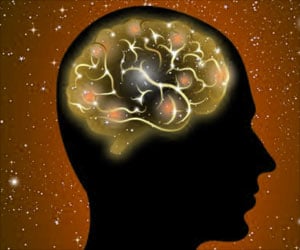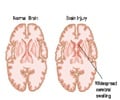- Chronic Traumatic Encephalopathy - (http://www.mayoclinic.org/diseases-conditions/chronic-traumatic-encephalopathy/basics/definition/con-20113581)
- What Is CTE? - (http://www.protectthebrain.org/Brain-Injury-Research/What-is-CTE-.aspx)
- Chronic Traumatic Encephalopathy (CTE) - (http://www.alz.org/dementia/chronic-traumatic- encephalopathy-cte-symptoms.asp)
- Could CTE Be Diagnosed in People Before Death? - (http://www.brainline.org/content/multimedia.php?id=7597)
What is Chronic Traumatic Encephalopathy (CTE)?
Chronic traumatic encephalopathy (CTE), earlier known as dementia pugilistica, is a rare progressive degenerative disease that afflicts individuals who have suffered repeated concussions and traumatic brain injuries.
Athletes, boxers, people who take part in contact sports and soccer, and military personnel are the most vulnerable victims. The brain tends to atrophy over years following the repeated injuries.
In addition, a protein called tau protein accumulates in the brain, which may affect the function of neurons.

What are the Causes of Chronic Traumatic Encephalopathy (CTE)?
CTE is observed mostly in individuals involved in contact sports, boxing, and wrestling, though not all individuals who encounter repeated head trauma are afflicted with CTE. The causes for CTE include:
- Repetitive head trauma in athletes participating in soccer, ice hockey, rugby, boxing, and lacrosse
- Repeated banging of head
- Epilepsy that is not well-controlled
- Blast injuries to military personnel
People with CTE may exhibit signs of other neurodegenerative diseases, such as Alzheimer's disease, amyotrophic lateral sclerosis, Parkinson's disease or frontotemporal dementia.
What are the Symptoms of Chronic Traumatic Encephalopathy (CTE)?
A wide range of symptoms can be noted in individuals suffering from CTE. The symptoms include defective cognitive functioning, motor impairment, and emotional instability. Following are a few symptoms observed in people with CTE:
- Difficulty in thinking
- Impulsive behavior
- Depression or apathy
- Short-term memory loss
- Difficulty in planning and executing tasks
- Impaired judgment
- Prone to substance abuse
- Suicidal thoughts
- Behavioral changes like irritability and aggression
- Speech and language difficulties
- Difficulty walking, tremor, weakness or rigidity
- Dysphagia or difficulty swallowing
- Vision problems
- Olfactory abnormalities

How do You Diagnose Chronic Traumatic Encephalopathy (CTE)?
Currently, CTE can be definitely diagnosed only after death on the basis of a brain autopsy. However, research is in progress to find a group of tests that may accurately diagnose CTE even during the lifetime of the patient. Some of the tests that may be included in the group are:
Neurological Tests
Neurological testing involves the testing and observation of the following in an individual suspected of being affected by CTE.
- Speech, language, and cognition including short-term and long-term memory
- Muscle tone and strength
- Reflexes
- Sense of sight and hearing
- Ability to get up from a chair and walk across the room
- Coordination
Brain-imaging Tests
The following tests may give an indication of damage to the brain from trauma:
- Susceptibility-weighted imaging is a type of MRI that shows tiny bleeds that result from injury to the central nervous system. Other forms of MRI like diffusion tensor imaging and magnetic resonance spectroscopy may also be useful in detecting brain abnormalities in CTE
- Single-photon emission computerized tomography used for the diagnosis of dementia is being explored to differentiate CTE from Alzheimer's disease or other neurodegenerative diseases.
- Positron emission tomography (PET) tracks a tracer fluid's flow through the brain. The development of PET markers to detect tau abnormalities in CTE is being explored.
- Event-related potentials and quantitative EEG are non-invasive tests using electroencephalography, in which a mesh cap covered with electrodes is placed on the person's head. It allows in detecting, recording, and analyzing brain waves that might find brain changes resulting from multiple traumatic brain injuries.

How do You Treat and Prevent Chronic Traumatic Encephalopathy (CTE)?
Though there is no treatment for CTE, it can be prevented as it is associated with recurrent concussions. The recommendation to prevent CTE is to reduce mild traumatic brain injuries and prevent additional injury after a concussion. Following are some techniques with which head injury can be reduced.
- Use of sports-specific helmets to reduce injury from baseball, ice hockey, rugby, alpine skiing, and snowboarding. Helmets have not reduced injury for soccer players and cannot eliminate the occurrence of concussions.
- Use of bicycle and motorcycle helmets that reduce head injury in case of accidents.
Following a concussion due to sports injury, the following steps should be taken:
- Remove the athlete from play for the day, have a health care professional evaluate the athlete, inform the athlete's significant relative and keep the athlete out of play until health care professionals provide a normalcy report
- Once the athlete is back to play, start with light aerobic exercise (no weight-lifting) followed by moderate exercise (weight-lifting is fine), then heavy, noncontact exercise followed by practice and controlled full contact
- Finally, the athlete can take part in competitions. Lithium could have a possible role in the treatment of CTE to prevent suicidal tendencies and control impulsive behavior.
Health Tips
Though there is no cure for CTE, here are some health tips that you could adopt following a head injury.
- Cut back on activities if brain injury is sustained.
- Avoid drinking alcohol as it interferes with the brain’s functioning.
- Write things down or limit tasks, as needed.
- Avoid a second concussion before the first one heals.
- Get plenty of rest that will help the brain cells to rejuvenate themselves.











